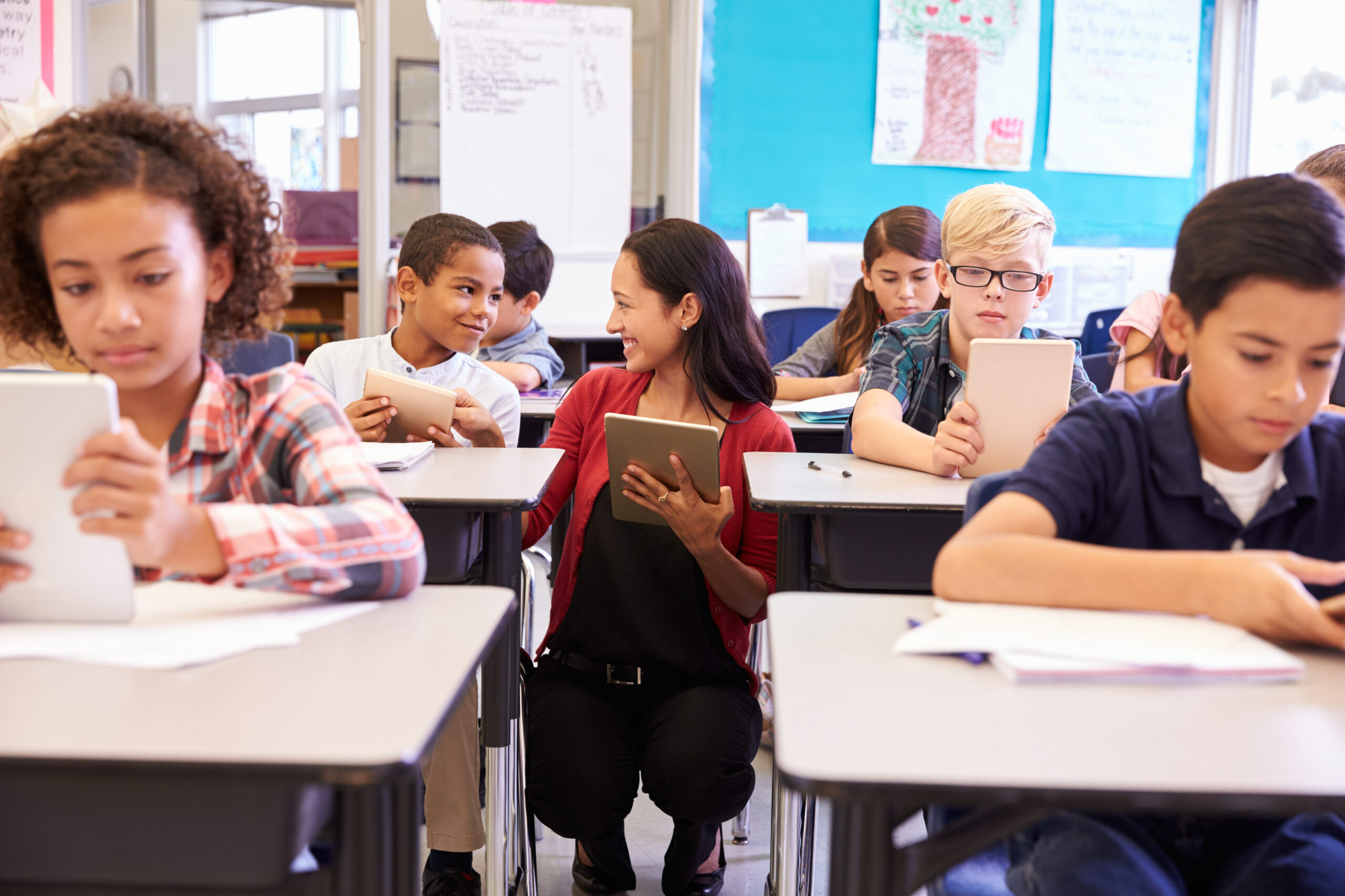In the podcast, “Beyond Multiple Choice: The Future of Language and Literacy Assessment,” Dr. Anthony Benners details the future of language and literacy assessment in New York City schools. Benners is an Innovation Advisor for the NYC Department of Education and one of his tasks in this role is to transition New York City schools from pencil and paper testing to digital assessment.
Developing language assessments and assessing language skills in such a large and diverse school district is a challenge. However, digital language assessment and online learning opportunities have made this task easier and have overall enhanced student learning outcomes while ensuring students are assessed reliably and validly. Dr. Benners highlights four features that are key to implementing new technology or digital resources in the classroom for assessment or learning, they include:
Authentic Language Assessment
Through the TAO assessment platform, the NYC Department of Education assesses world language acquisition and learning. Using traditional testing methods, students would memorize words, sentences, or verb conjugations out of context with little ability to practice in authentic ways. All of this made it challenging for students to learn new languages and for educators to authentically assess what students can do.
Implementing online learning and assessment has allowed for authentic learning opportunities that extend well beyond memorization. Utilizing authentic assessments that leverage artificial intelligence capabilities to provide authentic responses to students in real-time, along with adaptive assessment creates a language assessment that better shows what students know and how well they can use a language.
In addition to improving overall assessment and assessing language skills, online platforms, like TAO testing, allow schools and school districts to offer more in the way of options for students. Using traditional teaching methods for world languages, schools were limited in the number of world languages they could offer, especially if there were no textbooks or other resources available. However, through online learning, educators have access to authentic materials and they can seamlessly integrate them into their online classroom.
Utilizing Design Thinking In Assessing Language Skills
One of the biggest game changers in assessing language skills is moving the learning from memorization of nouns and verbs to using the language in authentic situations. Dr. Benners notes that one of the features that are most valuable to educators in the learning process is critical and design thinking.
Design thinking is a problem-solving approach that focuses on understanding the needs of individuals, generating ideas, prototyping, and testing solutions. It is increasingly being used in various fields, including education, to create innovative solutions to complex problems. In assessment, design thinking is essential to developing authentic and relevant exams or tests.
Through design thinking, students can demonstrate their learning at a variety of levels and in a variety of ways. Educators can use design thinking to create assessments that are more engaging, interactive, and authentic. This can lead to higher levels of student engagement and motivation, as well as more accurate assessments of student learning.
Standards of Interoperability
In addition to developing authentic assessments and using design thinking in assessment, it is also critical that any adopted technology be usable with a wide variety of programs and software. This is called interoperability, the standards of interoperability help to ensure that new software programs can be integrated without having to sacrifice existing programs. It also ensures educators can implement new technology as it becomes available.
Interoperability allows for the sharing of student data among different systems, which can provide teachers with a more complete picture of a student’s academic progress and needs. This, in turn, can lead to more targeted and effective instructional interventions. Through systems like TAO testing, teachers can pull data from many different programs to create a complete picture of a student and their abilities.
Creating Unique Opportunities With Open-Source Technology
Open source technology refers to software and hardware that is freely available, customizable, and distributable under an open license. With open-source technology, like TAO testing and Open Assessment Technologies, educators can create unique learning opportunities for their students. In education more broadly, open-source technology offers several benefits including:
Affordability – Open source technology is often free or significantly less expensive than proprietary software. This can reduce the cost of technology in schools, making it more accessible to students and educators.
Customizability – With open-source technology, you can customize the software to meet the unique needs of individual schools and classrooms. This allows educators to create technology solutions that are tailored to their specific educational goals.
Flexibility – Open source technology is highly adaptable and can be modified to work on a wide range of hardware and software platforms. This makes it easier for schools to integrate technology into their existing infrastructure and to collaborate with other schools and organizations.
Security – Student safety is always a concern when implementing new technology. Open source technology is often more secure than proprietary software, as security vulnerabilities can be identified and fixed quickly by a large community of developers.
Collaborative learning: Open source technology promotes collaboration and sharing among students and teachers. This can foster a more collaborative learning environment, where students can work together on projects and share their knowledge and skills.
The Bottom Line
In New York City, and indeed around the world, the future of education is becoming increasingly technology-based. Online learning platforms have expanded and become more user-friendly as teachers and students begin to utilize increasingly complex technology in the classroom.
Before considering implementing new software or programming in the classroom, district level decision maker should consider the following:
- Does the tech improve authentic assessment?
- Is design thinking enabled?
- Is it interoperable with other systems already in place?
- Is the technology proprietary or open source?
Language assessment through TAO offers all of the above and gives educators the ability to analyze data at both a macro and micro level, improving student learning outcomes.

